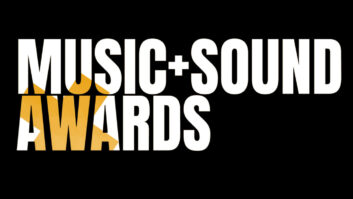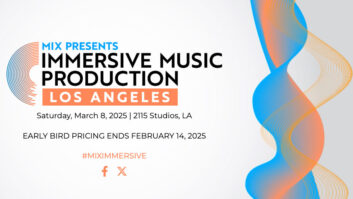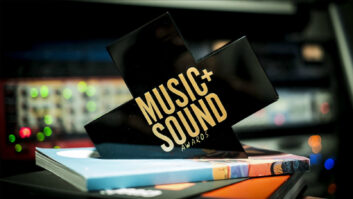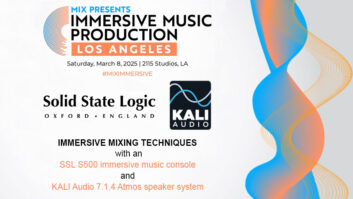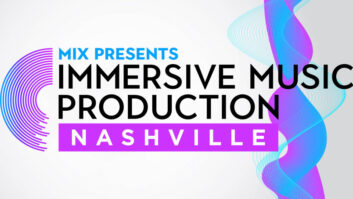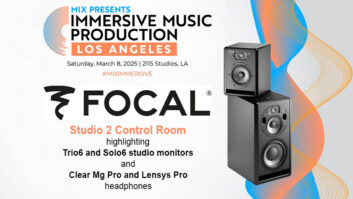THE COEN BROTHERS’ “O BROTHER, WHERE ART THOU?”Films by the Coen brothers tend to be eagerly anticipated. Blood Simple and Raising Arizona have their cult followings, as do The Big Liebowski, Miller’s Crossing and Barton Fink. And who didn’t love Fargo? So it’s not surprising to note the advance buzz on their latest effort, O Brother, Where Art Thou?, set to open December 22. Called “cheerful and uproarious” by the L.A. Times after its Cannes debut in June, the film stars George Clooney, John Turturro, Tim Blake Nelson and Holly Hunter.
Picture this: Clooney, manacled to Nelson and Turturro, breaks out of a chain gang and makes a run for his life, his wife and buried treasure. Together, the three embark on a perilous journey strewn with magical events that include encounters with a Cyclops, played by John Goodman, some Sirens and a blind seer. That’s right, The Odyssey. But, a very American Odyssey, set in 1930s Mississippi, a fact underscored by the soundtrack, which features traditional and contemporary Southern music performed by the likes of John Hartford, the Stanley Bothers, Norman Blake, Emmylou Harris and Alison Krauss.
Serious Southern music fans, the Coens turned O Brother into an in-depth exploration of the genre. And, in a move both obvious and inspired, producer T-Bone Burnett (Los Lobos, Counting Crows, Elvis Costello, Roy Orbison, The Wallflowers), with the help of singer/songwriter Gillian Welch, was tapped to supervise. Given Burnett’s longtime passion for folk and bluegrass, and his sonically iconoclastic points of view, it turned out to be a match made in heaven.
Because the music was such an integral part of the movie, Burnett was involved earlier than might be expected, and began researching songs and casting singers soon after the script was completed. Working on O Brother offered him a unique bonus: the opportunity to meet legendary artists he’d revered for much of his life.
“I listened to bluegrass and folk as a kid,” he comments, “so Ralph Stanley, for example, has been an imaginary being to me for almost 40 years now. To have the chance to work with him was wonderful. And when I started doing research and listening to this music again, I discovered a whole wealth of other things. It’s a very deep well – a deep, long story of beautiful music.”
Burnett and engineer Mike Piersante spent countless hours searching record bins in vintage vinyl stores. “T-Bone and I got together and did pre-production by going to record stores and buying CDs of vintage recordings,” explains Piersante. “He found the songs he wanted, and I compiled them and sent them to the Coen brothers to say yay or nay. I think we went through six CD compilations of music trying to get the right songs.”
“Looking in those sections for interesting things and tracing them down, it’s really like getting into wine,” Burnett laughs. “We probably listened to a thousand CDs and records. There are so many exquisite old pieces of musical history that you can still get. I ended up finding artists like Washington Phillips, who was an itinerant preacher in Dallas in the ’20s and played a dolceola [a zither-like instrument with a small keyboard].”
Along with listening for songs, the two were listening for sounds. “We would decide what we liked or didn’t like about the character of each record,” recalls Piersante. “T-Bone then earmarked different musicians and groups for different songs, and [music coordinator] Denise Stiff tried to schedule everyone to revolve in and out of Nashville, where we’d decided to record.”
While some of the performances, such as those by the Fairfield Four and Chris Thomas King, were done live on camera, much of the music was recorded prior to filming. Unusual as that was for a feature film, it was necessary, because many of the characters, including Clooney, perform in selected musical scenes.
“I guess it’s almost like a musical,” explains Burnett. “But people don’t break out into song in the middle of a gang fight or something like that – all the music was motivated by the characters.” [Laughs.]
The Odyssey theme made for multiple psychological and emotional levels in the film, which are also implied in the music. For example, the Sirens have their own song, performed by Emmylou Harris, Gillian Welch and Alison Krauss. “If you remember the story,” notes Burnett, “the Siren song was magical. It was alluring and seductive, yet frightening, beautiful and eerie. Everyone hears something different in it. And, I believe, it had a certain soporific effect on our heroes. So we took an old Negro lullaby and twisted it to give it the seductive, magical qualities that a Siren song would have.”
Burnett’s strong sonic opinions come through clearly in the recordings. “I don’t think, in general, that recent technology has improved sound,” he states. “In fact, if you listen to a well-tuned Edison 78 player with an emerald needle, it’s cleaner, louder and fuller range than anything we have today. To me, it was as good as sound reproduction has gotten. Digital may eventually get there, but it’s got a long way to go.”
In keeping with that philosophy, the choice of recording studios was key. The project was mixed in Los Angeles at Sunset Sound’s Studio One, but the bulk of the recording, over a four-week period, was done in Nashville at Sound Emporium’s Studio A. “Cowboy Jack Clement, who was a sonic genius, built that room,” Burnett comments, “and whatever wood it’s built of, whatever the combinations are, it really works. Recording in that room is like being inside the body of an acoustic guitar. Rooms have tunings, and whatever the tuning is there, it’s perfect for acoustic music. Bass, guitar, violin, mandolin – all those wooden instruments sound extraordinary in that room.”
While Burnett was researching and compiling music, Piersante was doing his own research into vintage recording, using books, including Huber and Williams’ Professional Microphone Techniques and the Web site “A Brief History of the Decca Tree Microphone Technique.” The Decca Tree technique, named for Los Angeles’ Decca Records studios, where it was developed, became his main tool.
“As best as I could tell,” says Piersante, “the technique was first used in the late ’40s to record orchestras and choirs. It’s basically a wide stereo pair with another center mic that’s placed forward. There are special stands made to hold all three mics, but we did our own setup with measurements that I got from a couple of books. The pair gets placed about nine feet high and about eight feet apart. The front mic becomes pretty much an isosceles triangle, face forward, and what you get is a nice stereo spread with a defined center.
“Apparently, Neumann M50s, in omnidirectional, were commonly used back then, but we’d been thinking about using ribbon mics on this project, so we put up three RCA 77-DXs,” he continues. “The tall ceilings at Sound Emporium were a real asset, and because we were using the ribbons with their figure-8 patterns, we got all the nice wall reflections and such. And, because we’d measured, every time we’d come back we could set them back up in the same array.
“The Decca tree was probably about 50 percent of our sound,” Piersante adds. “Because of that, the biggest concern for me was getting the phase dialed in. I’m pretty much a phase nut anyway, and I’m constantly flipping phase, or more correctly, the polarity switch, and moving mics to see which way sounds the best. Once I got the phase dialed in well on the mics in the Decca Tree, and we got the proper distance between them and whatever spot mics we put up, I could keep a lot of the mics in a straight line.
“That was important, because, with most of the musicians who came in, it wasn’t a typical tracking date. Instead, it was just a group of people who played and sang live, did a few takes and that was it. Most of them stood, and a lot of times we’d use just one mic on the floor. They would step in for their solos, step in for vocal parts – they’re all great performers who know how to work a mic.”
For the first few sessions, Burnett and Piersante had mic “shootouts,” shortly settling on favorites, which were rented in Nashville from both Bill Bradley and Underground Sound. Besides the 77-DXs, standbys were an RCA 6203 for guitars and male vocals, an RCA 10001 for female vocals and an RCA 44BX, primarily used on bass.
“I set the 44 off to the side of the bass to get a more ambiguous bass sound,” Piersante notes, “to make it a little more enveloping. Something that I heard time and again on the old recordings was that the bass wasn’t as defined as we often try to get it today.”
Rounding out the complement were a U67, an M49, a Coles and another 77-DX. “We didn’t use ribbons for everything,” admits Piersante, “but the ribbon sound did complement a lot of the music that we were recording. It was true and natural, but it also had a good midrange edge.”
For the most part, Piersante bypassed the console, relying on a selection of outboard mic preamps including API and Tube-Tech, augmented by LA-2A, Summit and 1176 compressor/limiters. Tracks were recorded to 2-inch analog tape on a Studer 827 to Quantegy 499 tape at plus 9 over 185. “I wanted an 800, but in Nashville it was too hard to rent one,” laughs Piersante. “With all the digital work they do, there aren’t many around. And, I think the rental companies don’t like hauling those giant things around.”
Although the goal was vintage sound, the technology required to make frequent mixes that would play back flawlessly on a movie set was anything but vintage. “There was a lot of upkeep and housekeeping,” says Piersante. “Matt Andrews, my assistant at Sound Emporium, was always on top of it; he was integral to the project. We probably had 90 reels of 2-inch tape, not to mention the safeties. And we were rough mixing to timecode DAT, sending weekly tapes with final code to the set down in Mississippi, where they were shooting locked to music. If there was anything wrong with the playback or the sync, it could be catastrophic. There was no room for error, so sometimes it felt like a little pressure-cooker.”
Memorable moments in the studio abounded on the sessions, beginning with the first day of recording. “The second person to come in was Ralph Stanley,” recalls Piersante. “He sang a song called `Oh Death,’ a cappella in one take, and it was truly bonechilling. Everyone in the room was frozen with their mouths open. It was a moment that pulled your head out of all the technology. I’m sitting, worrying, `Is it loud enough to tape? Is it compressing? Am I missing anything?’ – all those tech things you think about. To have something just stop you in your tracks and fixate you in a total listener’s perspective for a while, that’s pretty uplifting. All in all, it felt like recording this music was about heart – and capturing something that may never exist again in this world.”

